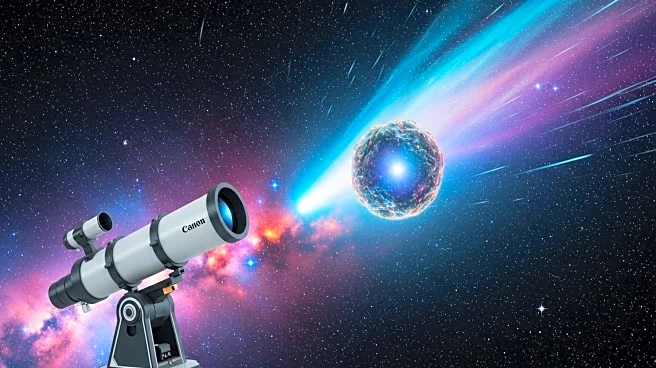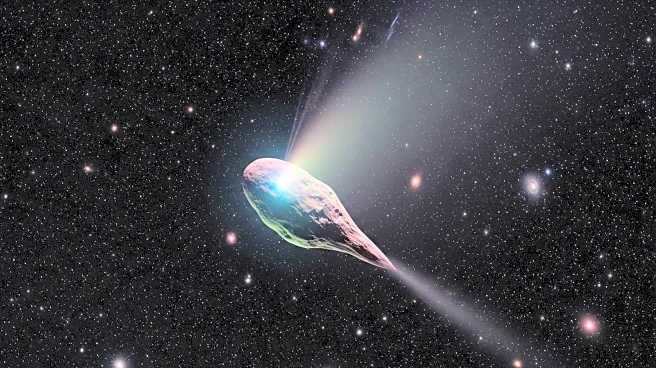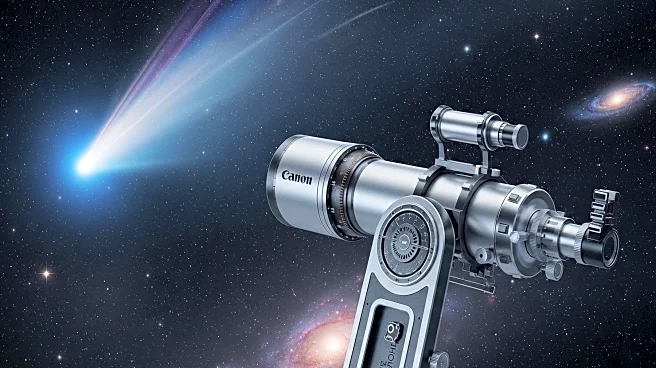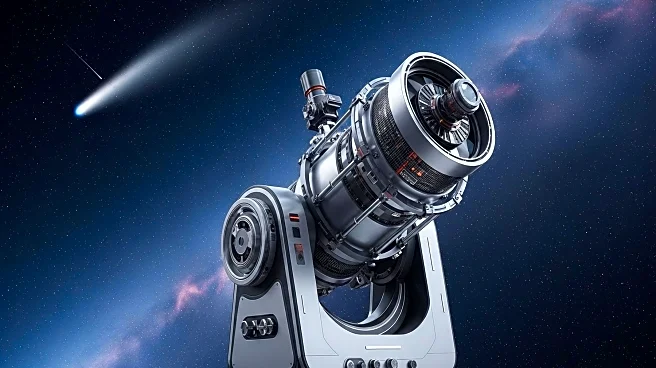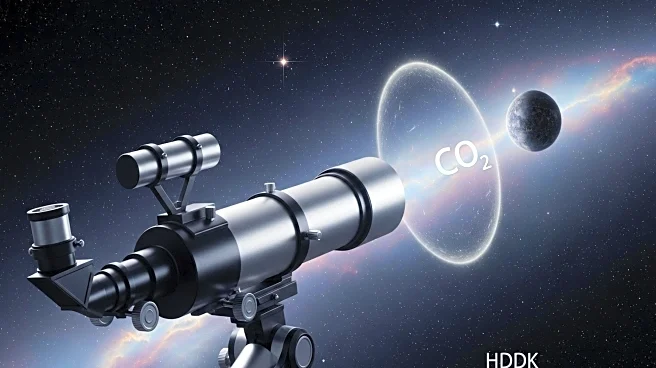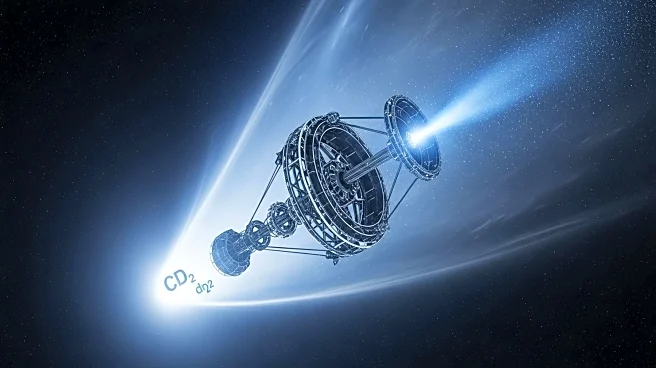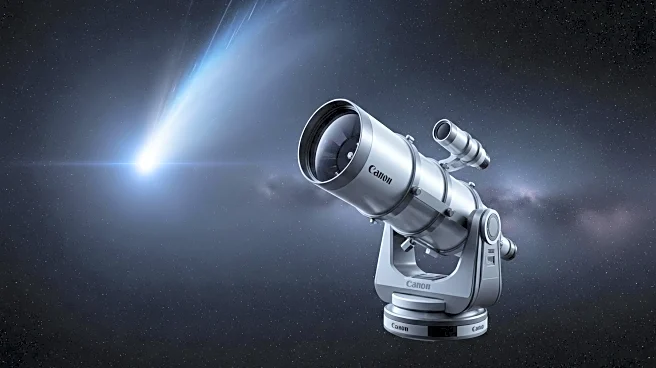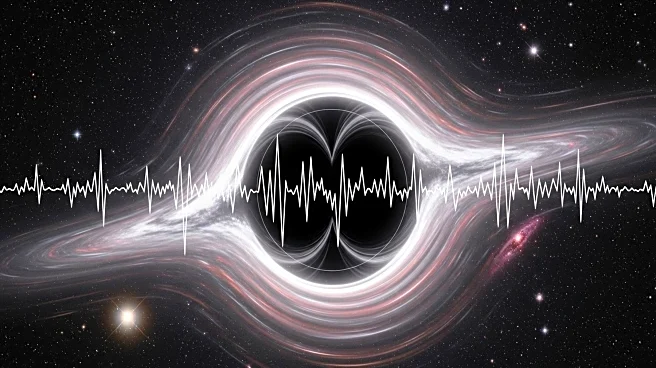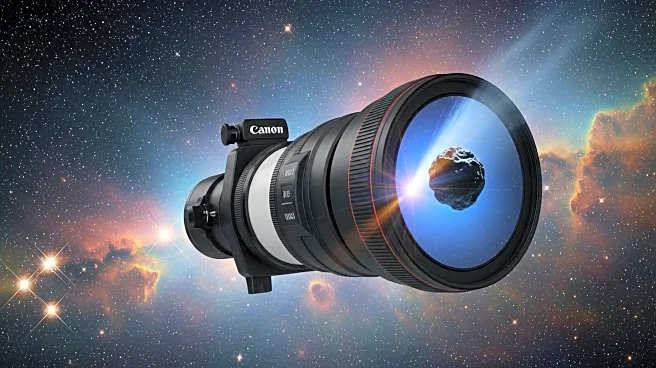What is the story about?
What's Happening?
Astronomers have utilized NASA's James Webb Space Telescope (JWST) to observe the interstellar comet 3I/ATLAS, revealing a high carbon dioxide to water ratio in its coma. This discovery, made during the telescope's first observations on August 6, suggests unique chemical properties that could provide insights into the comet's origins beyond our solar system. The comet, only the third confirmed interstellar object, is being studied before it exits the solar system in October. The findings, reported in a preprint paper on Zenodo, indicate that the comet's high carbon dioxide content may be linked to its exposure to radiation or its formation near the CO2 ice line in its parent protoplanetary disk.
Why It's Important?
The discovery of 3I/ATLAS's unusual chemical composition is significant as it may offer clues about the formation and evolution of interstellar objects. Understanding the comet's makeup could enhance knowledge of planetary formation processes and the conditions in distant protoplanetary disks. The comet's high velocity and trajectory provide a rare opportunity to study an object from outside the solar system, potentially influencing future research on interstellar phenomena. The findings could also impact theories about the diversity of cometary compositions and their interactions with solar radiation.
What's Next?
Researchers will continue to observe 3I/ATLAS as it approaches the sun, aiming to gather more data on its composition and trajectory. The comet's passage offers a limited window for study before it leaves the solar system. Further observations may refine understanding of its chemical properties and origins. The scientific community is expected to engage in discussions about the implications of these findings, potentially leading to new hypotheses about interstellar objects and their formation.
AI Generated Content
Do you find this article useful?
